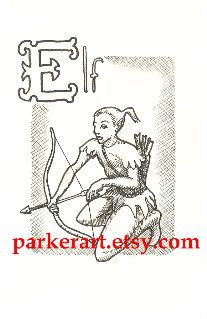Harvey Parker
My shop: (Come see a new monster every day!)
Parkerart.etsy.com
My blog: (Find out more about me.)
http://parkerartblogspot.blogspot.com/Read my Tweets at:
http://twitter.com/ParkerArt Artist's Bio:
*over 43 years of drawing experience
*Certified Gifted and Talented Instructor
*Master of Arts in Education
*Bachelor of Fine Arts, with an emphasis in Sculpture
*Certified Art Education Specialist
*Studied Art History of the Italian Renaissance in Florence
Venice
Milan
Sienna
Rome and the Vatican
*Travel includesTuscany
Zagreb and Sarajevo, (former Yugoslavia)
London
New York City
Southwestern US
Tijuana, Mexico
Southeastern US (except the Carolinas)
Pennsylvania Amish country, as well asPittsburgh and Philadelphia
Oklahoma City
Annapolis, Maryland
Washington D.C.
1964
Born in Paris, Tennessee, USA
1965
Began drawing.
1967-'73
Navy Brat, oldest of five, San Diego, California, USA
1974
Down on the Farm, West Tennessee, no lights, no phone, no mail. We grew our own food, dug our own well, bathed in a galvanized tub when the creek was too cold.
1975
We finally got Electricity! Caught pneumonia.
1976-82
Farmboy, raised goats, chickens, pigs, ducks, geese, guineas, cats, dogs, rabbits...
1982
High school graduate! Also became oldest of six (my mother's first mid-life crisis).
1983
Farmboy (still). Caught small bush-hog on fire. Broke hydraulics on largerbush-hog. Stuck large tractor in the mud. Stuck larger tractor trying to pull large tractor out of mud. (All in one day.)Sent to college. (Cheaper than Farm Equipment.)
1983-1988
Organization of Murray Art Students (OMAS), Murray, KentuckyActive OMAS Member
1984
Art Major FreshmanAll my clothes are black.
1985
Olive Street Studio Member, Murray, KentuckyShared studio space with fellow students while living in the sculpture garden shack.Organization of Murray Art Students (OMAS)Vice President, Chaired annual student show committeeMurray State University, Murray, Kentucky
1986
Summer Study in Europe.
Fall
College Senior, Take One.Move back into dorm.
1987
Spring
College Senior, Take Two.Married Pamela Leigh Blincoe Johnson.
August
Super Saturdays InstructorMurray State University, Murray, KentuckySculpture Instructor for children’s weekend art program.
1988
College Senior, Take Three.Radiology Transporter at Murray Calloway County Hospital, Murray, KY. Moonlight in food service.
1991
College Graduate! Continued to moonlight in food service.
1993-96
Promotion!Radiology Office Supervisor at Murray-Calloway County Hospital Murray, KY.Quit food service.
1996 to Present
Art Instructor at the Mayfield-Graves County Art Guild, Mayfield, KY. Conducting drawing and sculpting workshops for children and adults.
1996-98
Sculptor/Designer at The Berripatch, Inc., Paris, TN. Duties included creation of original sculptures, line art, logo design, and mold-making.
1998-99
Art Instructor at New Madrid County Central High School in New Madrid, MO.
1999 to 2007
Art/Humanities Teacher at Fulton County in Hickman, KY.Active Fulton County Education Association (FCEA) Member, 2005-07 FCEA President
2001
My wife bought a Queen Anne Victorian house in the historic section of Mayfield, Kentucky that was built in 1888.
2003
Juror, Youthful Impressions ShowMayfield Graves County Art Guild in Mayfield, Kentucky
2005
July- Began repainting the exterior of our Victorian home: sky blue for the porch ceiling; antique white, antique green, two shades of purple, and a warm yellow for the posts and trim.
August- Earned Master of Arts in Education from Murray State University, Murray, Kentucky
Oct. 15- Survived a heart attack. Had one cardiac stent.
Dec. 5- Five more stents.
2006
Jan. 3- Returned to teaching.
 Great Horned Owl (RUBO VIRGINIANUS) 1950 edition Audubon print, with commentary on the reverse by Roger Tory Peterson. Printed in the USA, slightly larger than 9"x11". Rescued from a church bazaar, the page has a slight yellow patina, to be expected after 60 years
Great Horned Owl (RUBO VIRGINIANUS) 1950 edition Audubon print, with commentary on the reverse by Roger Tory Peterson. Printed in the USA, slightly larger than 9"x11". Rescued from a church bazaar, the page has a slight yellow patina, to be expected after 60 years









































